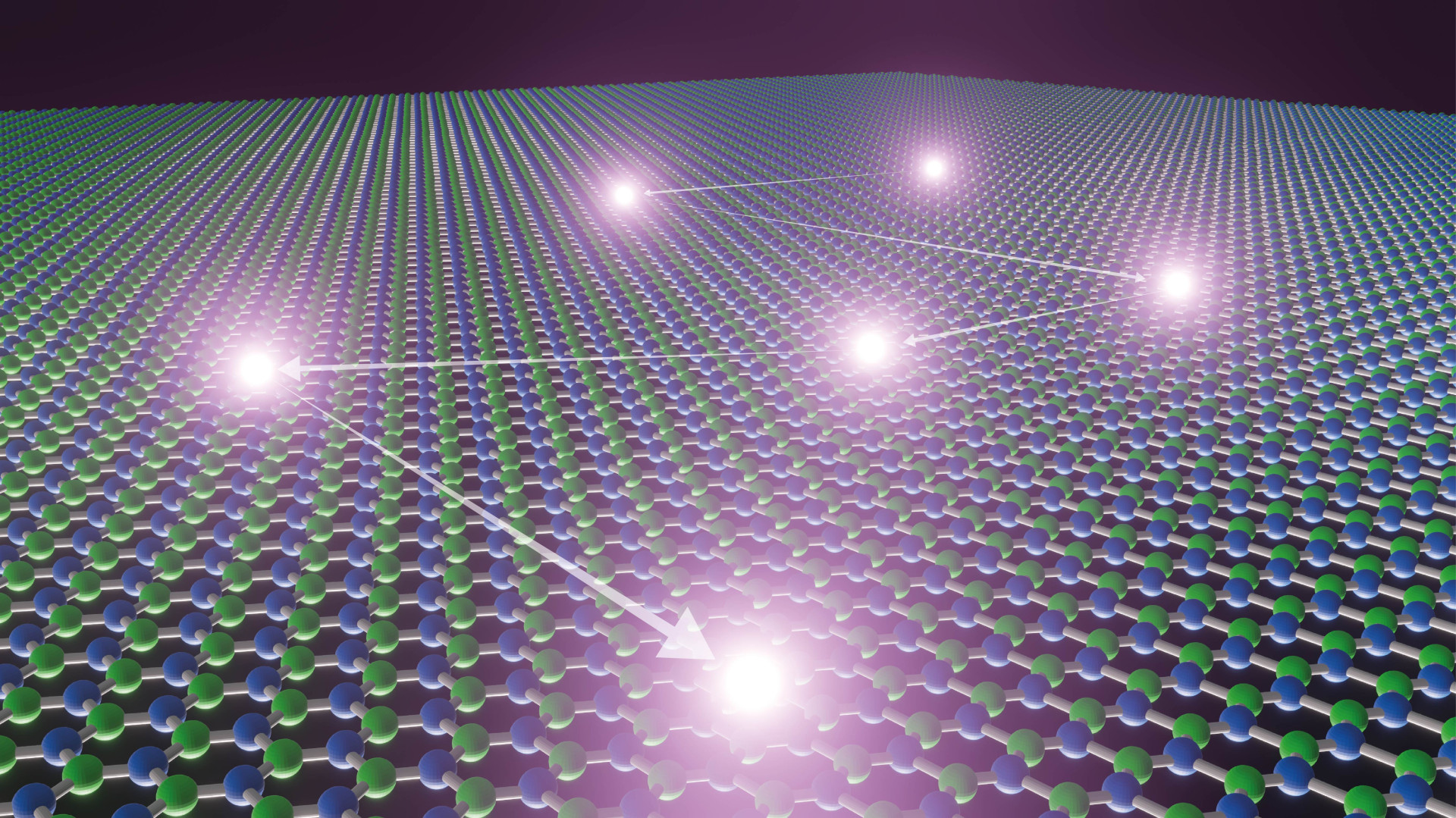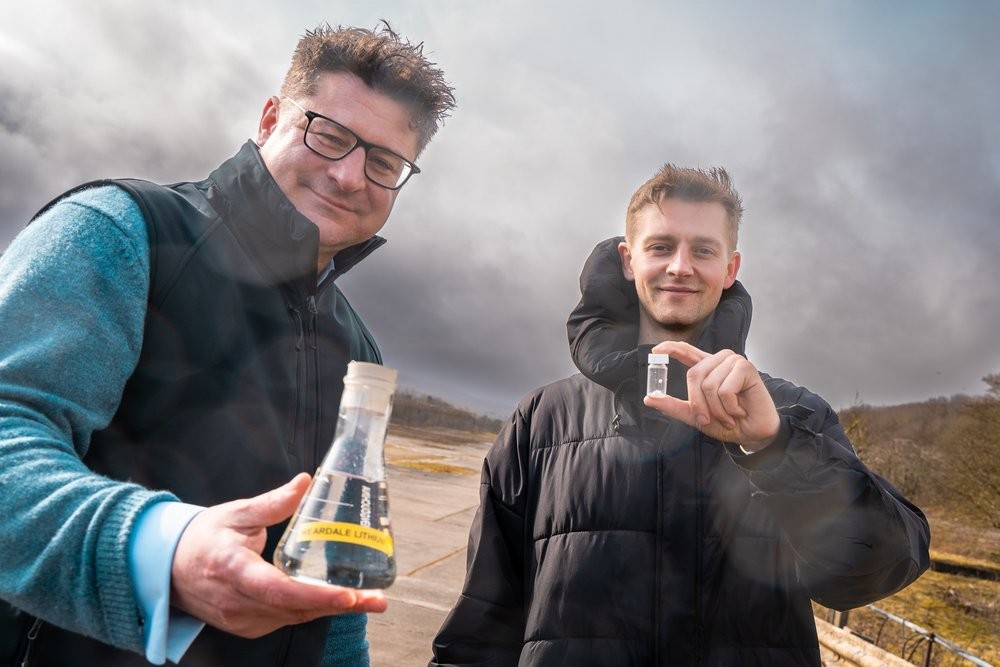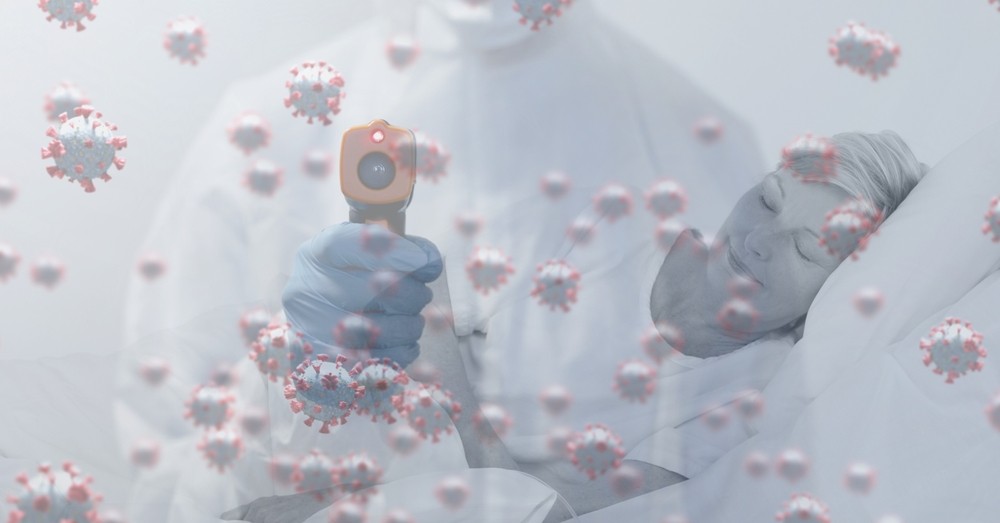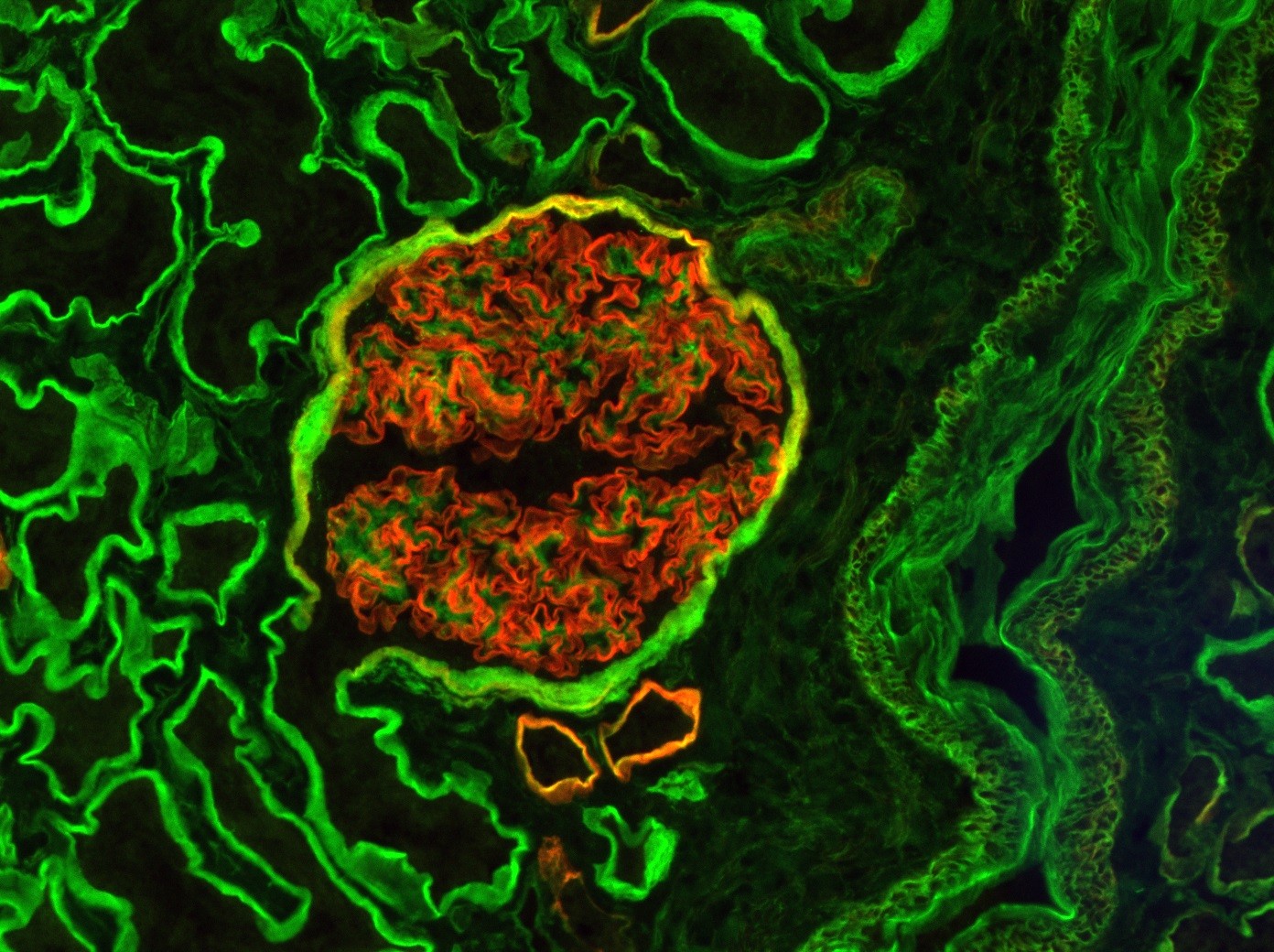您当前的位置: 首页 > 学校概况

学校简介:
学校教员: 人,学生数量:人, 校友数量: 人,子机构数量:个, 相关机构: 个,受资助项目:项, 文章数: 篇,专利数:项,

The University of Manchester has signed aMemorandum of Understanding(MoU)with Greater Manchester-based organisation KultraLab Limited,which will formalise and strengthen the partnership through new research,development and knowledge exchange activities.The MoU will create aframework to build on an already fruitful relationship,and will develop collaboration roadmaps to expand the breadth and depth of the partnership in areas including Behavioural AI,Organisational Psychology and High Performance Culture and Behaviours.KultraLab is abehavioural science and technology organisation,and they have developed abehaviour change coaching platform to enable organisations to create high-performing teams through AI coaching.“The partnership between The University of Manchester and KultraLab started in 2020,and has organically grown and expanded into multiple collaborations across the Faculty of Humanities and Science and Engineering,”said Caroline Stanton,Head of SME Partnership in the University’s Business Engagement and Knowledge Exchange Team.“The signing of this MoU represents an exciting milestone in the partnership and will provide astrategic framework to strengthen and diversify collaborative opportunities,continue to foster aculture of knowledge exchange and enrich both organisations with valuable benefits.” 查看详细>>
来源:曼彻斯特大学 点击量: 0
In the UK,5-20%of over 60s population experience mild cognitive impairment(MCI),a decline in one cognitive area,such as memory,language,spatial orientation,or forward planning,over time.MCI is confirmed by pen-and-paper testing.Though patients exhibiting MCI don‘t necessarily have dementia they often suffer with conditions linked to dementia like Alzheimer‘s disease,and have ahigher risk of developing dementia in the two years following diagnosis of MCI.MCI patients who do go onto to exhibit symptoms of dementia experience avery slow progression of symptoms,which may be between five and 10 years.This uncertainty causes stress on patients and their families,as it is difficult to plan ahead for their life and care needs.It has however,been established that high levels of Tau and altered levels of Amyloid proteins–also indicative of Alzheimer‘s disease–can predict progression and onset of dementia accurately.Tau and Amyloid can be measured in anumber of ways,for example either PET or within the cerebrospinal fluid(CSF)obtained via alumbar puncture.Where PET scans are expensive and lumbar punctures largely perceived as risky or dangerous by patients,MRI scans are accessible and affordable.The technology is more readily available than PET scanners or the clinical skills required for alumbar puncture.Diffusion MRI,specifically,is used to look at the neuronal architecture of the brain.Researchers are able to see patterns of neuronal connections and their arrangements using this technique and therefore can identify normal and abnormal patterns.What constitutes as healthy ageing in the brain is becoming well established,the neuronal patterns people with dementia develop are also becoming better characterised.The brain looks as if it‘s aged more,and quicker,in people with dementia.Hamied Haroon and the team of neuroimaging researchers at the University of Manchester are currently trying to develop new techniques in MRI scanning and image analysis to support this.They’re improving our capacity to measure loss of brain cells as this loss is the root cause of many symptoms of dementia.Additionally,they’re developing novel methods to measure the changes in blood delivery to the brain,and therefore the availability of oxygen.Lack of oxygen also leads to cell death which may advance vascular dementia.Hamied Haroon,Research Fellow in Quantitative Biomedical Magnetic Resonance Imaging,University of Manchester,says:“MR imaging allows us to map the brain non-invasively and repeatability,as there is no ionising radiation involved,providing unique insights on the brain’s organisation and function in health and ageing.“We are developing exciting analysis methods to detect the earliest signs of such devastating conditions as dementia,when promising new therapies should have better chances of halting the disease in its tracks.” 查看详细>>
来源:曼彻斯特大学 点击量: 0
Researchers at University of Manchester and theÉcole polytechnique fédérale de Lausanne(EPFL),Switzerland,have revealed an innovative approach to track individual molecule dynamics within nanofluidic structures,illuminating their response to molecules in ways never before possible.Nanofluidics,the study of fluids confined within ultra-small spaces,offers insights into the behaviour of liquids on ananometer scale.However,exploring the movement of individual molecules in such confined environments has been challenging due to the limitations of conventional microscopy techniques.This obstacle prevented real-time sensing and imaging,leaving significant gaps in our knowledge of molecular properties in confinement.A team led by Professor Radha Boya in the Department of Physics at The University of Manchester makes nanochannels which are only one-atom to few-atom thin using two-dimensional materials as building blocks.Prof Boya said:“Seeing is believing,but it is not easy to see confinement effects at this scale.We make these extremely thin slit-like channels,and the current study shows an elegant way to visualise them by super-resolution microscopy.”The study‘s findings are published in the journal Nature Materials.The partnership with the EPFL team allowed for optical probing of these systems,uncovering hints of liquid ordering induced by confinement.Thanks to an unexpected property of boron nitride,a graphene-like 2D material which possesses aremarkable ability to emit light when in contact with liquids,researchers at EPFL‘s Laboratory of Nanoscale Biology(LBEN)have succeeded in directly observing and tracing the paths of individual molecules within nanofluidic structures.This revelation opens the door to adeeper understanding of the behaviours of ions and molecules in conditions that mimic biological systems. 查看详细>>
来源:曼彻斯特大学 点击量: 0
After 25 years of observations,an international team of astronomers has seen the first evidence of ultra-low-frequency gravitational waves.The waves are expected to come from pairs of supermassive black holes found in the centres of merging galaxies and the discovery could hold answers about the formation and evolution of the Universe and the galaxies that populate it,including our own Milky Way.The finding stems from observations made over the last 25 years using six of the world‘s most sensitive radio telescopes,including the Lovell Telescope at The University of Manchester’s Jodrell Bank Observatory,and is presented by ateam of researchers from the European Pulsar Timing Array(EPTA),in collaboration with Indian and Japanese colleagues of the Indian Pulsar Timing Array(InPTA).The results are published today in the journal Astronomy and Astrophysics.Dr Michael Keith,Lecturer at Jodrell Bank Centre for Astrophysics at the University of Manchester,said:“The results presented today mark the beginning of anew journey into the Universe to unveil some of its unsolved mysteries."We are incredibly excited that after decades of work by hundreds of astronomers and physicists around the world,we are finally seeing the signature of gravitational waves from the distant Universe.”Gravitational waves are ripples in space that can be produced by two objects orbiting each other.But they are extremely weak and hard to detect.The observation of gravitational waves produced by orbiting pairs of supermassive black holes,which are hundreds of millions of times the mass of our sun,will allow us to learn about the evolution of galaxies and the origin of the enigmatic black holes located in their centres.The EPTA is acollaboration of scientists from more than ten institutions across Europe and brings together astronomers and theoretical physicists to observe an array of pulsars–neutron stars in space that emit radio waves–with the specific goal of detecting gravitational waves.The telescopes include,the Effelsberg Radio Telescope in Germany,the Lovell Telescope of the Jodrell Bank Observatory in the United Kingdom,the Nançay Radio Telescope in France,the Sardinia Radio Telescope in Italy and the Westerbork Radio Synthesis Telescope in the Netherlands.Combined,the pulsar observations construct aGalaxy-sized gravitational wave detector–spanning from the Earth to 25 carefully chosen pulsars across the Galaxy.This makes it possible to study gravitational waves with wavelengths much longer than those seen by other experiments.Since the wavelengths are very long,the frequencies are very low,this is why it has taken many years to collect enough data for this new signal to become apparent.The observations have been complemented by data from the Giant Metrewave Radio Telescope(GMRT)in India and provided by InPTA,leading to the development of auniquely sensitive dataset.This announcement has also been coordinated with similar publications by other pulsar timing arrays across the world. 查看详细>>
来源:曼彻斯特大学 点击量: 0
For the last 20 years,scientists have been puzzled by how water behaves near carbon surfaces.It may flow much faster than expected from conventional flow theories or form strange arrangements such as square ice.Now,an international team of researchers from The University of Manchester,the Max Planck Institute for Polymer Research of Mainz(Germany),and the Catalan Institute of Nanoscience and Nanotechnology(ICN2,Spain),reports in astudy published recently in Nature Nanotechnology that water can interact directly with the carbon’s electrons:a quantum phenomenon that is very unusual in fluid dynamics.The results of this research could lead to applications in water purification and desalination processes and maybe even to liquid-based computers.A liquid,such as water,is made up of small molecules that randomly move and constantly collide with each other.A solid,in contrast,is made of neatly arranged atoms that bathe in acloud of electrons.The solid and the liquid worlds are assumed to interact only through collisions of the liquid molecules with the solid’s atoms:the liquid molecules do not“see”the solid’s electrons.Nevertheless,just over ayear ago,a paradigm-shifting theoretical study proposed that at the water-carbon interface,the liquid’s molecules and the solid’s electrons push and pull on each other,slowing down the liquid flow:this new effect was called quantum friction.However,the theoretical proposal lacked experimental verification.“We have now used lasers to see quantum friction at work,”explains study lead author Dr Nikita Kavokine.The team studied asample of graphene–a single monolayer of carbon atoms arranged in ahoneycomb pattern.They used ultrashort red laser pulses(with aduration of only amillionth of abillionth of asecond)to instantaneously heat up the graphene’s electron cloud.They then monitored its cooling with terahertz laser pulses,which are sensitive to the temperature of the graphene electrons.This technique is called optical pump–terahertz probe(OPTP)spectroscopy.To their surprise,the electron cloud cooled faster when the graphene was immersed in water while immersing the graphene in ethanol made no difference to the cooling rate.“This was yet another indication that the water-carbon couple is somehow special,but we still had to understand what exactly was going on,”Kavokine says.A possible explanation was that the hot electrons push and pull on the water molecules to release some of their heat:in other words,they cool through quantum friction.The researchers delved into the theory,and indeed:water-graphene quantum friction could explain the experimental data."It‘s fascinating to see that the carrier dynamics of graphene keep surprising us with unexpected mechanisms,this time involving solid-liquid interactions with molecules none other than the omnipresent water,"comments Prof Klaas-Jan Tielrooij.What makes water special here is that its vibrations,called hydrons,are in sync with the vibrations of the graphene electrons,called plasmons,so that the graphene-water heat transfer is enhanced through an effect known as resonance.“It is impressive that quantum phenomena usually occurring in solids appear in what would be considered aclassical liquid as water”adds Dr Alessandro Principi,Senior Lecturer at the University of Manchester.The experiments thus confirm the basic mechanism of solid-liquid quantum friction.This will have implications for filtration and desalination processes,in which quantum friction could be used to tune the permeation properties of the nanoporous membranes.“Our findings are not only interesting for physicists,but they also hold potential implications for electrocatalysis and photocatalysis at the solid-liquid interface,"says Xiaoqing Yu,PhD student at the Max Planck Institute in Mainz and first author of the work.The discovery was down to bringing together an experimental system,a measurement tool and atheoretical framework that seldom go hand in hand.The key challenge is now to gain control over the water-electron interaction.“Our goal is to be able to switch quantum friction on and off on demand,”Kavokine says.“This way,we could design smarter water filtration processes,or perhaps even fluid-based computers.” 查看详细>>
来源:曼彻斯特大学 点击量: 0
The Whitworth,which is part of The University of Manchester,has today announced Sook-Kyung Lee as its new Director.Lee will join the Whitworth from London’s Tate Modern,where she is aSenior Curator of International Art.Since 2019 she has led the‘Hyundai Tate Research Centre:Transnational’,a major research initiative in partnership with Hyundai Motor,exploring new perspectives on global art histories.In 2021 she was also appointed Artistic Director of South Korea’s 14th Gwangju Biennale,which opened in April 2023.During her tenure at Tate Modern,Lee curated several major exhibitions and displays including Richard Bell:Embassy(2023),A Year in Art:Australia 1992(2021-23),and Nam June Paik(2019-20),which went on to tour to Europe,USA and Asia.She also played an invaluable role in shaping Tate‘s international art collection strategy by leading such initiatives as Asia Pacific Acquisitions Committee and the co-acquisition programme with Museum of Contemporary Art,Australia,in partnership with the Qantas Foundation.She will take up her role at the Whitworth in August 2023 and will become Honorary Professor of Transcultural Curating at the University.Speaking about her forthcoming position as the Whitworth’s Director,Sook-Kyung Lee said:“It is ahuge honour for me to take up the role of Director at the Whitworth,one of the most innovative and audience-focused art institutions in the UK and internationally.I have admired the Whitworth‘s commitment to work with local communities and to use art for positive social change.I would like to further develop the gallery in its artistic rigour and social impacts and to widen its global connections,along with the gallery‘s dedicated staff and The University of Manchester.”The Whitworth operates as aconvening space between the University and the people of the city.It was founded in 1889 as The Whitworth Institute and Park in memory of the industrialist Sir Joseph Whitworth for“the perpetual gratification of the people of Manchester”and continues this mission today in new contexts.Nalin Thakkar,Vice-President for Social Responsibility at The University of Manchester said:“I am delighted that Sook-Kyung Lee is joining us as the new Director of the Whitworth art gallery and will take up the position as Honorary Professor of Transcultural Curating.There is afantastic opportunity to build on the Whitworth’s international renown as aleading cultural institution,whilst working closely with the University,the city of Manchester,our community partners and other stakeholders to strengthen its current focus and explore new exciting directions for the future.”In 2015 the gallery undertook a£17 million redevelopment by architects MUMA,which doubled the public space,creating new facilities to house the collection of over 65,000 works of art,textiles,and wallpaper.Along with expanded gallery spaces,a study centre,learning studio,and collections care centre,the gallery reconnected with its park,with communal gardens and outdoor programmes.The Whitworth is home to exhibitions and projects which often represent and explore the experiences of our local and global communities.Currently the(Un)Defining Queer exhibition delves into the Whitworth‘s collection to examine how we can use aqueer lens to define what the term‘queer’means,co-led by an intersectional group of people who self-identify as LGBTQIA+.Later this month,the gallery will showcase new project and exhibition Economics the Blockbuster presented as part of Manchester International Festival 2023.Economics the Blockbuster will explore how art and artists are shaping the economy and will include works by artists and artist groups based in the UK and internationally.The gallery is driven by amission to work with communities to use art for positive social change,and actively address what matters most in people’s lives.This new vision has been developed as part of an international dialogue about how to evolve and adapt museums to aconstantly changing world.This work is underpinned by three key concepts:learning together,through making and doing;creating aplace of care,consideration,and community;taking action. 查看详细>>
来源:曼彻斯特大学 点击量: 0
For the first time in the UK,scientists have been able to recover commercial grade lithium carbonate and graphite from black mass;a solid black powder containing acomplex mixture of metals and impurities recovered from recycling end-of-life lithium-ion batteries.The UK-first is amajor step forward for sustainability in battery technology.Watercycle Technologies Ltd,founded by University of Manchester alumnus,Dr Sebastian(Seb)Leaper,has recovered commercial grade lithium carbonate and graphite from black mass;a solid black powder containing acomplex mixture of metals and impurities recovered from the recycling of end-of-life lithium-ion batteries.Conducted in partnership with globally renowned precious metal recovery specialists,RSBruce,and with access to Graphene Engineering Innovation Centre‘s(GEIC)world-leading capabilities and the support of its expert facilities team,the test work on 1kg of black mass validates the Watercycle’s ground-breaking technology.It underpins the major contribution that deep tech university spin outs are playing in championing the UK’s ambitions for the energy transition and the attainment of acircular economy.WaterCycle Technologies Ltd.are aTier 2partner of the GEIC,the University’s world-class,multi-million-pound engineering centre which provides industry-led development in graphene applications,bringing real-world products to market.Watercycle CEO Dr Seb Leaper said,“To most people it is not obvious that one of the main barriers to achieving Net Zero is the availability of critical minerals like lithium.But we must ensure that the means of accessing these minerals is environmentally responsible.This requires sustainable primary production and efficient recycling technology,which is what we are creating at Watercycle.We are proud to be aUniversity of Manchester spinout and are proud to be working with two fantastic northern companies in RSBruce and Weardale Lithium who are making the UK’s domestic lithium supply chain possible.”This breakthrough marks the first step forward in commercialising Watercycle’s technology. 查看详细>>
来源:曼彻斯特大学 点击量: 0
A major UK study has discovered that the disturbed sleep patterns in patients hospitalised with COVID-19 was likely to be adriver of breathlessness.The study of patients in 38 institutions across the UK was led by The Universities of Manchester and Leicester,presented at the European Congress of Clinical Microbiology&Infectious Diseases(Copenhagen,15-18 April)and published in Lancet Respiratory medicine.The team discovered that 62%of participants who had been admitted to hospital for COVID-19 had sleep disruption,which was likely to persist for at least 12 months,and highlight for the first time the association between two post-COVID condition symptoms:breathlessness and sleep disruption.On average,participants who had been hospitalised with COVID-19 slept for over an hour longer,but their sleep patterns were less regular(19%decrease on the sleep regularity scale),than matched participants who were hospitalised due to any cause.The study researchers also found that participants with sleep disturbance were more likely to have anxiety and muscle weakness,common post-COVID-19 condition symptoms.Statistical analysis identified that sleep disruption was likely to drive breathlessness directly,but that reduced muscle function and increased anxiety,both recognised causes of breathlessness,could partially mediate the association between sleep disturbance and breathlessness.The study authors speculate that targeting sleep disruption by reducing anxiety and improving muscle strength in these patients could alleviate breathlessness,but further investigation is needed.The study used extensive data from the hospitals taking part in the PHOSP-COVID study between March 2020 and October 2021.PHOSP-COVID is aconsortium from across the UK,researching long-term health outcomes for patients hospitalised with COVID-19.The study was funded by the UK Research and Innovation,Asthma+Lung UK and others.Sleep quality was assessed using subjective measures that were self-reported by 638 patients to researchers.It was also measured objectively in another 729 patients,who wore devices similar to smart watches that measured night-time activity levels.Both measures consistently revealed ahigher prevalence of sleep disturbance in people who had been hospitalised with COVID-19 compared with matched controls from the UK Biobank who had been hospitalised for any cause.T The impact on sleep from hospitalisation due to COVID-19 was irrespective of critical care admission.One of the authors Dr John Blaikley,a clinical scientist from The University of Manchester and respiratory doctor said:“This study has discovered that sleep disturbance could be an important driver of post-COVID-19 breathlessness–or dyspnoea-because of its associations with reduced muscle function and anxiety.“If this is the case,then interventions targeting poor sleep quality might be used to manage symptoms and convalescence following COVID-19 hospitalisation,potentially improving patient outcomes.”First author and mathematician Mr Callum Jackson from The University of Manchester said:“Understanding the causes of breathlessness is complex since it can arise from conditions that affect the respiratory,neurological,cardiovascular,and mental health systems.“These same systems are also affected by sleep disturbance,another symptom that has been frequently reported after COVID-19.“Our findings suggest that sleep disturbance is acommon problem after hospitalisation for COVID-19 and is associated with breathlessness.“We also show this is likely to persist for at least 12 months as subjective sleep quality did not change between 5and 12 month follow-up visits.”Professor Chris Brightling from the University of Leicester said:“The strengths of our study include its size,multicentre nature,and the use of different complementary assessment measures to evaluate sleep disturbance.Consistent clinical associations were also observed across each evaluation method.”“Future research should now assess whether interventions targeting sleep disturbance can improve not only sleep quality but also breathlessness through reducing anxiety and improving muscle strength.” 查看详细>>
来源:曼彻斯特大学 点击量: 0
A collaborative therapeutic development project between researchers at The University of Manchester and Duke University in the United States,has received funding from Four Points Innovation,a private company wholly-owned by affiliates of Deerfield Management.This investment aims to accelerate research to develop anovel therapy to treat agenetic condition called Alport syndrome."Alport syndrome affects around 1in 5,000 individuals and is caused by alterations in collagen genes leading to kidney failure,hearing loss,and eye problems,”said Professor Rachel Lennon,Pediatric Nephrologist and Director of the Wellcome Centre for Cell-Matrix Research at the University of Manchester.Though there are treatments that can slow the progression of the kidney disease,there are currently no therapies that address the root cause of Alport syndrome,genetic variants that disrupt the genes encoding collagen IV,which is found throughout the body in aprotein meshwork called the basement membrane."Fixing collagen in the kidney basement membrane is exciting,as this should also open new therapies for basement membrane-associated pathologies in other organ systems,such as in blood vessels,muscles,eyes,and ears.”David R.Sherwood,Jerry G.and Patricia Crawford Hubbard Professor of Biology at Duke University.Bryan Baines,Director of Scientific Collaborations,Duke University Liaison to Four Points Innovation said:"This project has great potential and illustrates the unique opportunity presented by this funding mechanism.It’s seizing on the strengths of the research coming from both Duke and The University of Manchester and catalyzing amilestone-driven research plan.In the absence of this arrangement with Deerfield,it is difficult to envision that this project would have gotten off the ground through more customary funding vehicles."Through Four Points Innovation,Deerfield has committed up to$130 million of funding for 10 years for Duke-affiliated preclinical development of new drugs for improved quality of life and cures for disease."We are excited to launch our first project with Four Points and begin our collaborative work to translate this novel therapy into apotential treatment"said Michael Foley,PhD,CEO,Deerfield Discovery and Development at Deerfield. 查看详细>>
来源:曼彻斯特大学 点击量: 0
The proportion of children and adolescents prescribed antipsychotics in English general practice doubled from 0.06%to 0.11%between 2000 and 2019,find researchers at The University of Manchester’s Centre for Women’s Mental Health.The drugs,which have atranquillising effect,are frequently used in adults to treat major mental illness,such as schizophrenia.However,they can be associated with substantial side-effects such as sexual dysfunction,infertility,and weight gain leading to diabetes.The National Institute for Clinical Excellence has approved the use of some antipsychotics in under 18’s with psychosis or with severely aggressive behaviour from conduct disorder However the study,published in the Lancet Psychiatry,suggests they are prescribed for an increasingly broad range of reasons-the most common being autism.The team examined primary care records of 7.2 million children and adolescents,aged 3to 18,registered at selected English General Practices over the period 2000 to 2019.The overall percentage who were prescribed antipsychotics was relatively small–0.06%in 2000 and 0.11%in 2019.However,the increasing use of antipsychotics is acause for concern,argue the researchers,given that their safety in children,who are still rapidly developing,has not been established.The study also found that:Boys and older children–aged 15 to 18–were more likely to be prescribed antipsychotics than girls and younger children;however,the increasing trends were evident in all groups.The older class of antipsychotics,that may be associated with extrapyramidal side effects such as movement disorders,were more commonly prescribed in more deprived areas.Dr Matthias Pierce,senior research fellow at the University of Manchester’s Centre for Women’s Mental Health jointly lead the study.He said:“This study demonstrates aconcerning trend in antipsychotic prescribing in children and adolescents.We do not think the changes in prescribing necessarily relate to changes in clinical need;rather,it may be more likely to reflect changes in prescribing practice by clinicians.“However,this study will help clinicians to evaluate the prescribing of antipsychotics to children more fully and will encourage them to consider better access to alternatives.”Senior author,Professor Kathryn Abel from The University of Manchester said:“Antipsychotic medications continue to have avaluable role in the treatment of serious mental illness.These findings represent adescriptive account of antipsychotic prescribing to children and adolescents in the UK today and provide awindow onto current practice.“It is notable,and relevant to the current discourse,that we report inequities in prescribing as aresult of deprivation levels;and that the indications for which approvals are available are no longer the commonest reason these medications are being prescribed.Broadening use of antipsychotics in developing young people begs questions about their safety over time and demands more research on this topic.” 查看详细>>
来源:曼彻斯特大学 点击量: 0